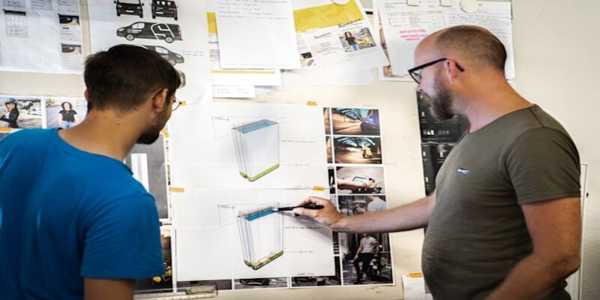Breaking Down the Latest EV Batteries: What You Need to Know
EV batteries are at the forefront of the latest innovations and technological advances. If you are someone who likes to know your tech, the latest EV batteries are as important as the newest tech. Let's dig deeper!
EV batteries are at the forefront of the latest innovations and technological advances. If you are someone who likes to know your tech, the latest EV batteries are as important as the newest tech. Let's dig deeper!
The Evolution of EV Batteries: From Lead-Acid to Solid-State
The journey of EV batteries began with lead-acid technology. These heavy batteries powered early electric vehicles but had low energy density.
By the late 20th century, nickel-metal hydride (NiMH) batteries took center stage, offering better range and efficiency. However, they still lacked the performance needed for mass-market EVs. The introduction of lithium-ion batteries in the 1990s changed everything. Lightweight, high-energy-density lithium-ion cells became the gold standard for EVs, enabling longer ranges and faster charging.
Today, solid-state batteries are emerging as the next significant innovation. These batteries replace liquid electrolytes with solid materials, offering higher energy density, faster charging, and improved safety. Automakers and tech companies are investing billions in this promising technology. Solid-state batteries are expected to power the next generation of EVs, making electric transportation more efficient and sustainable than ever before.
How EV Batteries Work: The Science behind the Power
EV batteries store energy in chemical form and convert it to electricity. Most EVs today use lithium-ion batteries, which consist of an anode, cathode, separator, electrolyte, and current collectors.
Lithium ions move from the cathode to the anode through the electrolyte when charging. During discharge, this process reverses, creating an electric current to power the vehicle.
Battery management systems (BMS) monitor and regulate energy flow to ensure safety and efficiency. Modern EV batteries are modular, consisting of multiple cells grouped into packs. These packs are designed to maximize energy storage while minimizing weight. Temperature control systems, like liquid cooling, prevent overheating and maintain performance.

Lithium-Ion Batteries: The Current Industry Standard
Lithium-ion batteries dominate the EV market for good reasons. They offer a high energy density, which translates to longer driving ranges. These batteries are also lightweight, making them ideal for electric vehicles that prioritize efficiency.
Additionally, lithium-ion batteries have a relatively fast charging time compared to older technologies. Automakers like Tesla, Toyota, and Ford rely on lithium-ion cells for their vehicles. However, lithium-ion batteries are not without challenges. They are expensive to produce, and their performance degrades over time.
Safety concerns also exist, as these batteries are sensitive to extreme temperatures and overcharging. Despite these issues, advancements in lithium-ion technology have improved their reliability and cost-effectiveness.
Until solid-state batteries become mainstream, lithium-ion remains the backbone of the electric vehicle revolution.
Solid-State Batteries: The Next Big Leap in EV Technology
Solid-state batteries are set to revolutionize the EV industry. Unlike lithium-ion batteries, they use a solid electrolyte instead of a liquid one. This change improves safety, as solid electrolytes are less prone to leaks and fires.
Solid-state batteries also offer higher energy density, allowing EVs to travel farther on a single charge. Charging times are significantly reduced, with some prototypes reaching full capacity in under 15 minutes. These batteries are also expected to have a longer lifespan, reducing the need for replacements.
Major automakers like Toyota and BMW are investing heavily in solid-state research. However, the technology is still in its early stages, with high production costs being a significant hurdle.
Battery Life and Range: What to Expect in 2025
In 2025, EV batteries are expected to deliver unprecedented performance. Advances in battery chemistry will improve energy density, allowing for 400–500-mile ranges on a single charge.
Manufacturers focus on extending battery lifespans, with some models promising over 1 million miles before significant degradation. Faster charging capabilities are also on the horizon, with ultra-fast chargers reducing downtime to minutes.
Solid-state batteries may begin to appear in high-end EVs, offering even greater efficiency and reliability. Despite these advancements, the cost of EV batteries is projected to decline further, making electric cars more affordable.
Thermal management and battery architecture innovations will ensure consistent performance in extreme climates.
The Environmental Impact of EV Batteries: Challenges and Solutions
EV batteries offer a cleaner alternative to fossil fuels but aren't perfect. The production of lithium-ion batteries requires mining for rare materials like lithium, cobalt, and nickel, which has significant environmental and ethical implications. Mining activities can harm ecosystems and lead to human rights abuses in certain regions.
Also, improper disposal of old batteries poses soil and water contamination risks. However, solutions are emerging. Recycling technologies are being developed to recover valuable materials from used batteries, reducing the need for mining.
Companies are also exploring more sustainable materials and production methods. Second-life applications for EV batteries, such as home energy storage systems, are gaining traction. Governments and manufacturers are setting stricter standards to ensure environmentally responsible practices.
Innovations in Charging Technology: Faster, Safer, and Smarter
Charging technology is advancing rapidly to meet the needs of modern EVs. Ultra-fast chargers capable of delivering 80% charge in under 20 minutes are becoming more common. Wireless charging systems are also gaining traction, offering seamless and convenient energy transfer.
Smart charging stations can now communicate with vehicles, optimizing charging times and energy use. Some systems integrate renewable energy sources, like solar and wind, for a greener charging experience. Safety features, such as real-time monitoring and thermal regulation, ensure the process remains secure.
Automakers are also exploring bidirectional charging, which allows EVs to return energy to the grid or power homes.

Recycling and Reusing EV Batteries: Closing the Sustainability Loop
Recycling EV batteries is essential for a sustainable future. Used batteries still contain valuable materials like lithium, cobalt, and nickel. Recycling facilities can recover these materials, reducing the need for mining and lowering production costs.
Second-life applications are also becoming popular. For example, old EV batteries are repurposed for energy storage in homes and businesses. Governments and automakers invest in recycling infrastructure to ensure proper disposal and reuse.
Companies like Redwood Materials are leading the charge in creating closed-loop systems for EV batteries. Consumer awareness is growing, with more drivers returning old batteries for recycling.
The Future of EV Batteries: Trends and Predictions
The future of EV batteries is full of promise and innovation. Solid-state batteries are expected to dominate, offering unparalleled efficiency and safety. Lithium-sulfur and sodium-ion batteries are also emerging as potential alternatives. Wireless charging and bidirectional energy flow will become standard features in many EVs.
Sustainability will remain a key focus, with increased recycling and eco-friendly materials. Battery production costs are predicted to drop significantly, making EVs more affordable. Governments worldwide are setting ambitious goals for EV adoption, further driving innovation. By 2030, EV batteries could deliver ranges exceeding 600 miles and charging times under 10 minutes. Finally, these advancements will transform transportation and help create a more sustainable and energy-efficient future. Thanks for the Read!